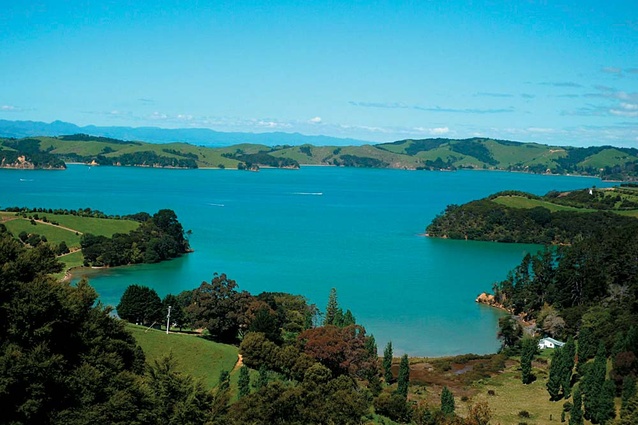War in court – the sequel
Man O’War Station goes to the High Court to appeal an Environment Court decision that refused it permission to build.
We reported on the Environment Court’s decision on the Man O’War case in the Summer 2010 issue of Landscape Architecture New Zealand. That decision refused consent to an application by Man O’War Station Limited for the construction of a one-storey, 98m-long family home, complete with separate guest house, to be built in a parallel alignment with the beach at Owhiti Bay on eastern Waiheke Island.
High Court Decision
The decision was appealed to the High Court, which held that the Environment Court made an error of law in failing to have regard to the decision of the Auckland City Council at first instance, as it is required to under section 290A of the Resource Management Act, and referred the matter back to the Environment Court for reconsideration.
The essence of the High Court decision related to the bio-physical dimension of Owhiti Bay and how the lower Court had taken this into consideration. The Court commented that the “Environment Court took such a contrary position to the commissioners on this fundamental aspect of the appeal, the Court was required to address the Commissioners’ findings and the reasons underlying them”.
Consideration of Commissioners’ Decision
On appeal to the High Court, Man O’War contended that the ecology of Owhiti Bay is currently in a degraded state as a result of the history of human activity, occupation and pastoral use, whereas the application (if granted) would lead to the restoration of the natural resource components through stock fencing, re-vegetation, weed and pest management and native plantings.
This view was supported at the Council hearing, where one of the reasons given by the Commissioners for granting consent was that the mitigation measures proposed would enhance the ecology and coastal landscape of the area and protect archaeological remains. The Commissioners also found that the proposal had been designed to minimise the visual effect on the coastal landscape character by not only including re-vegetation and native plantings but also by keeping the house to one storey, with a flat roof.
In contrast to the Commissioners, the Environment Court, after making “only brief passing reference” to the decision at first instance, held that the construction of the buildings would “fundamentally recast Owhiti Bay as a modified bay, in strong contrast to its present quality of outstanding naturalness”.
Section 290A requires the Environment Court to “have regard to” the decision that is the subject of the appeal. The High Court held that this meant the Court must give “genuine attention and thought and such weight as is considered appropriate”, and “as a matter of practice, the requirement to give genuine attention and thought to such a decision would usually require an explanation to be given should the Environment Court depart from the council decision”.
Because the Environment Court took a contrary position to the Commis- sioners on such a fundamental aspect of the appeal, the Court was required to address the Commissioners’ findings and the reasons underlying them.
Consideration of alternatives
In addition, the High Court held the Environment Court had erred in finding that the applicant had not considered alternative locations for the proposal. Noting that the proposal itself (to build accommodation at Owhiti Bay for the purposes of using the particular site) defined the consideration of alternatives, the High Court found that the landscape architect’s consideration of the alternative of shifting the proposed structures in a westerly direction along the shore of the bay was evidence that the applicant had considered alternatives. There was also some, albeit limited, further evidence of the position of other bays on the coastline.
A lesson in consideration
In the High Court’s words, section 290A of the RMA “reflects a recognition by the legislature that the decision subject to appeal will almost always be relevant”. This is particularly the case where the Environment Court’s decision is contrary to the previous decision. While there may be no express requirement in section 290A to provide reasons for a departure from a first instance decision on appeal, in such circumstances the High Court seems to expect an explanation of the reasons why the Environment Court has come to a different view than the initial decision makers. Failure to provide such reasons could result in the decision arriving back on the Environment Court’s doorstep for reconsideration.










